I’ve always been a fan of the InterCity 125 High Speed Train (HST), ever since I received a Hornby HST train set for Christmas back in 1978, two years after the full-sized version first appeared on the UK rail network. It was the HST that first really got me interested in railways, and I’ve been completely obsessed with trains - both steam and diesel - ever since.
The HST was an instant hit with the public when it was first launched. The sleek, aerodynamic wedge shape, perhaps recalling Gresley’s A4 Pacifics in some people’s minds… the streak of yellow along the sides of the power cars… the speed at which it suddenly darted from out of cover and shot across one’s vision when you happened to be passing within sight of a stretch of main line somewhere - all these things captured the imagination. And what a joy when I first got to travel on one!
Manufacture of the type ceased in 1982, but most of the original fleet is still in operation with a handful of train operating companies, including Great Western Railway, Grand Central, CrossCountry, East Midland Trains and Virgin Trains East Coast.
Great North Eastern Railway (GNER) operated HSTs for a while on the East Coast Main Line (ECML), before the franchise was taken over by National Express East Coast. The ECML was subsequently taken over and operated under direct Government control, by the Department for Transport’s publicly owned company East Coast. This franchise has now been taken over by Virgin Trains East Coast.
Additionally, Network Rail runs an HST set - painted bright yellow and officially termed the New Measurement Train, but nicknamed ‘The Flying Banana’. This set is currently involved in work on the Great Western Main Line (GWML), assessing the state of the track as part of the electrification programme.
Officially called the InterCity 125 (IC125), the HST holds the world record for diesel rail traction of 148.5mph. This was achieved on November 1 1987, on a run between Darlington and York by power cars 43102 and 43159, working a test train for new Mk 4 coach bogies. The original 125 sets were powered by 2,250 bhp (1,678 kW) Paxman Valenta engines, but all the remaining power cars have since received new engines - most of these are MTU 16V4000 R41 power units, with just the 24 East Midlands Trains (EMT) vehicles having Paxman VP185s.
Thankfully, the HSTs remain popular to this day. But having now reached the grand old age of 40, it is perhaps not too unkind to observe that they are getting a little old. They have served the nation well, but some have speculated whether it will shortly be time for them to retire. So, does this mean that after 40 years of top link service the 125 is soon to disappear completely? The answer, fortunately, is no.
Hitachi units under the Intercity Express Programme (IEP) will replace the HSTs on Great Western services in this year, followed by Virgin Trains East Coast a year later. However, around 27 of the four-car and five-car sets displaced from GWR will be taken on by ScotRail for use on Glasgow/Edinburgh to Aberdeen/Inverness services, while GWR itself plans to retain around 11 four-car sets for use on Cardiff-Penzance secondary services.
So while the current high profile of the IC125 might begin to slip somewhat, with their most arduous duties being worked by the new Hitachi units, the IC125 certainly isn’t going to disappear completely… at least not yet.
And even when it does, a preservation society called the 125 Group is already actively working to preserve the HST’s memory and good reputation, as well as sharing interest and information on the type. Established in 1994, the 125 Group is currently acting as custodian for the HST prototype (41001), thanks to an agreement with the National Railway Museum in 2012. It also has plans to (eventually) acquire and run a set in its original condition, complete with Paxman Valenta engine and with a number of Mk 3 carriages.
After some restoration work, 41001 is currently running in a splendid condition on the Great Central Railway (Nottingham) at Ruddington. The vehicle had arrived at the EMT depot at Neville Hill (Leeds) shortly after negotiations with the NRM had concluded. It was then subjected to some major restoration work, including the removal of the Paxman Valenta engine number S183. This had been sectioned, with parts cut away to illustrate to NRM visitors how a diesel engine works.
Other work on 41001 included a new coat of paint and a full internal rewire to replace all the tired 1970s wiring that was still in situ. The next task was to find an alternative power train, and this duly arrived in the form of power unit S508, which was fired up on July 1 2013.
“S508 is also a Paxman Valenta engine, manufactured in 2000 and donated to the NRM by First Great Western during the MTU re-power programme,” says 125 Group Communications Director John Zabernik. “It was formerly in power car 43143. S183 was removed and S508 fitted in its place at Neville Hill depot in June 2012.”
With this initial work complete, 41001 arrived at the GCR(N) in September 2013. The next stage was to restore the vehicle to full operational condition, complete with a new compressor.
Some modern modifications were added in the cab, and then 41001 was ready to run, making its first test run on the GCR on May 31 2014, hauling two BR Mk 2 carriages and with diesel 56097 trailing on behind. It hauled its first passenger train in 38 years on November 15 2014, leading a railtour called ‘The Screaming Valenta’ and accompanied by operational HST power car 43054 and a small set of Mk 3 carriages.
The 125 Group now also has three locomotive-hauled Mk 3 carriages suitable for working with 41001 - First Open (FO) 11074, Standard Open (TSO) 12092 and Restaurant First Modular (RFM) 10206. These had previously been kept in storage and were in fairly decent condition when they arrived at Ruddington. Nevertheless, a significant amount of restoration had to be carried out to resurrect electrical systems, including air-conditioning. This was largely completed by the end of 2015.
The three carriages were then taken to Wabtec Rail’s Kilmarnock facility, where they were repainted in the prototype HST livery to match 41001. The set has since visited a number of locations around the country, including the Mid-Norfolk Railway, the Nene Valley Railway and the Bo’ness and Kinneil Railway.
The group enthusiastically celebrated the 40th anniversary of the HST during 2016, including a visit to the Bristol St Philips Marsh depot open day on May 2, when pioneer production power car 43002 was repainted in the original BR blue and yellow InterCity 125 livery (125 Group assisted with sourcing of the livery drawings).
Great Western HST power cars were joined by examples from other trains alongside Prototype 41001, creating a historic line-up. The event also featured 43002 being officially named Sir Kenneth Grange in honour of the designer of the HST’s nosecone. Sir Kenneth Grange now also serves as the 125 Group’s Honorary President, and performed the naming ceremony himself.
43002 was also fitted with 40 YEARS 1976-2016 commemorative plaques, designed by graphic designer Paul Gentleman from Great Western Railway and made by Newton Replicas. And through a scheme sponsored by 125 Group, additional plaques have been manufactured and now adorn a number of operational Class 43 HST power cars, while another plaque is displayed inside the 125 Group’s catering vehicle at Ruddington (RFM 10206).
According to Zabernik all the train operating companies, as well as Network Rail and leasing companies Porterbrook and Angel Trains, fully supported the scheme. The plaques will be returned to the group upon their eventual removal from the vehicles.
The group also staged a celebratory event on the GCR(N), sponsored by EMT. The event took place on November 19, and raised funds for the Railway Children charity. Prototype power car 41001 operated trains in conjunction with EMT power car 43048 T.C.B. Miller MBE, chosen for the day as it is named after the British Rail Chief Engineer behind the original HST Project. 43048 ran four round trips with its two coaches attached to the 125 Group’s own coaches and 41001 at the other end.
When not running, driving cabs were opened up to visitors, while a cab ride in 41001 was offered as a raffle prize, with funds going to the Railway Children. VIP guests at the event included engineer Ron Whalley, who designed the revolutionary braking system that enabled the HST to stop from 125mph in the same distance as conventional 100mph locomotive-hauled trains, and another retired engineer Greg Lilleker, who led the original commissioning of 41001 (which included a record-breaking run of 143mph).
Tim Shoveller, Managing Director of Stagecoach UK Rail Division, was also present, getting involved in some of the shunting operations during the day.
“Following the 40th year celebrations led by GWR at St Philips Marsh in May and at the National Railway Museum in October, 125 Group and Great Central Railway (Nottingham) wanted to mark this historic year on home territory, so we were delighted that East Midlands Trains agreed to support the event,” says Zabernik.
“The never-seen-before hybrid HST formation successfully operated four return trips between Ruddington and Loughborough High Level, with hundreds of enthusiasts enjoying the sunny day. We were really pleased to support Railway Children, and £1,350 was raised for this excellent charity, which works hard providing protection and opportunity for children at home and abroad.”
125 Group’s long-term aim has always been the preservation of a production HST powered by the original Paxman Valenta engine type, and over the years it has consistently worked towards this objective, raising funds through membership subscriptions, merchandise sales activity, personal donations and a now established monthly donations scheme which is building preservation funds. Although 125 Group is keeping appraised of the developing scene on the network, it has no sights set on any particular numbered vehicles just yet, instead preferring to keep its options open with the hope of adopting the best-condition power cars and coaches whenever they might become available.
“This year 125 Group successfully qualified as a registered charity, which assists further with fundraising - something that was learned with the restoration of 41001 is that railway preservation is eye-wateringly expensive!” says Zabernik.
“During the 2007 HST re-engineering programme, we obtained a good stock of critical components including Valenta power units and Marston Cooler Groups, plus a sizeable collection of spare parts and other smaller components. This, plus the experience gained by 125 Group’s dedicated engineers restoring Prototype 41001 under Project Miller, should hopefully stand us in good stead once vehicles become available.”
Meanwhile, prototype power car 41001 and 125 Group’s three matching Mk 3 coaches will continue to be based at GCR(N), with home operating days plus the occasional away visit in planning stages for 2017.
The 125’s performance on the main line network is indeed entering a new chapter, although it is likely to still be with us in 2026, celebrating 50 years of service. Meanwhile, the 125 Group is intent on ensuring the much-loved HST is long remembered thereafter… and has made a great start in achieving this.

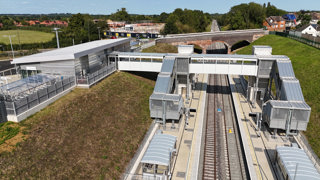
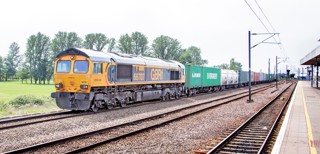

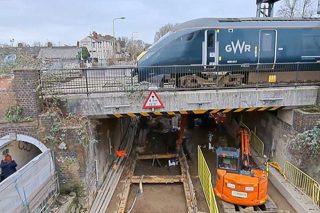
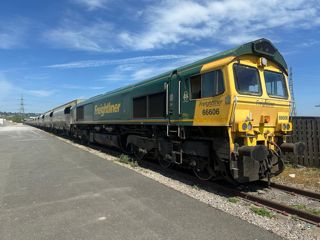




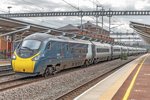







Login to comment
Comments
No comments have been made yet.